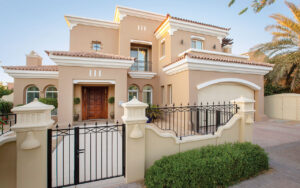Smart toilets are gaining popularity for their hygiene features, convenience, and eco-friendly design. One key selling point is water efficiency. But how much water can a smart toilet really save each year compared to a traditional toilet? Let’s break it down.
How Smart Toilets Use Water Efficiently
Smart toilets are equipped with advanced flushing systems that use the minimum amount of water necessary for a clean flush. Some key features contributing to water savings include:
Dual-flush systems
- Offers a low-volume flush for liquid waste and a higher-volume flush for solid waste
Pressure-assisted flushing
- Uses air pressure to improve flush efficiency without extra water
Sensor-activated flush
- Prevents accidental or multiple flushes
Adaptive flush settings
- Some models adjust flush volume based on usage patterns
Water Use Comparison: Smart vs Traditional Toilets
The average water use varies based on the age and type of toilet. Here’s how smart toilets compare:
| Toilet Type | Gallons per Flush (GPF) |
|---|---|
| Older toilet (pre-1992) | 3.5 – 7.0 GPF |
| Standard toilet (post-1994) | 1.6 GPF |
| Smart toilet (dual-flush) | 0.8 – 1.28 GPF |
A smart toilet can save up to 60% of water per flush compared to older toilets and around 20–30% compared to modern 1.6 GPF toilets.
Annual Water Savings Estimate
Let’s estimate yearly savings for a household of four, each using the toilet five times per day:
Traditional 1.6 GPF Toilet
- 1.6 gallons x 5 flushes x 4 people x 365 days = 11,680 gallons/year
Smart Toilet (average 1.0 GPF)
- 1.0 gallon x 5 flushes x 4 people x 365 days = 7,300 gallons/year
Annual Water Saved
- 11,680 gallons – 7,300 gallons = 4,380 gallons saved per year
That’s nearly 4,400 gallons saved annually per household just by switching to a smart toilet.
If replacing an older 3.5 GPF toilet, the savings jump to over 20,000 gallons per year.
Environmental Impact of Saving Water
Every gallon saved reduces pressure on water treatment facilities and natural water sources. Saving 4,000 gallons a year contributes to:
Lower water bills
- Water rates vary, but saving thousands of gallons adds up
Reduced energy use
- Less water needs pumping and treatment, lowering energy consumption
Support for drought-prone regions
- Conserving water is critical in areas with water scarcity
Additional Features That Boost Water Efficiency
Some smart toilets go beyond low-flush technology with features like:
Tankless design with direct supply
- Reduces water storage needs
Automatic leak detection
- Alerts users to hidden leaks that waste water
Built-in bidet reducing toilet paper usage
- Saves water used in paper production and wastewater treatment
Are Smart Toilets Worth It for Water Savings Alone?
While the water savings are impressive, smart toilets also provide:
- Enhanced hygiene through touchless flushing and bidets
- Convenience features like heated seats and night lights
- Long-term durability and eco-friendly certifications
If your primary motivation is lowering water usage, a high-efficiency toilet (HET) or WaterSense-certified toilet may offer similar water savings at a lower cost than a full-featured smart toilet.
However, for households wanting both water savings and technological convenience, a smart toilet is an excellent investment.
Maintenance and Water Efficiency
Smart toilets require proper maintenance to sustain water efficiency:
Check flush sensors regularly
- Dirty sensors may trigger incomplete or unnecessary flushes
Inspect seals for leaks
- Prevent silent leaks that waste water
Follow manufacturer’s guidelines
- Avoid disabling water-saving settings unintentionally
A smart toilet can save an average household 4,000 to 4,500 gallons of water per year compared to a standard 1.6 GPF toilet, with even greater savings when replacing older models. These savings translate into lower water bills and a reduced environmental footprint.
Beyond water efficiency, smart toilets offer added hygiene, comfort, and convenience—making them an increasingly popular choice for modern, sustainable homes.

)
)
)
)




